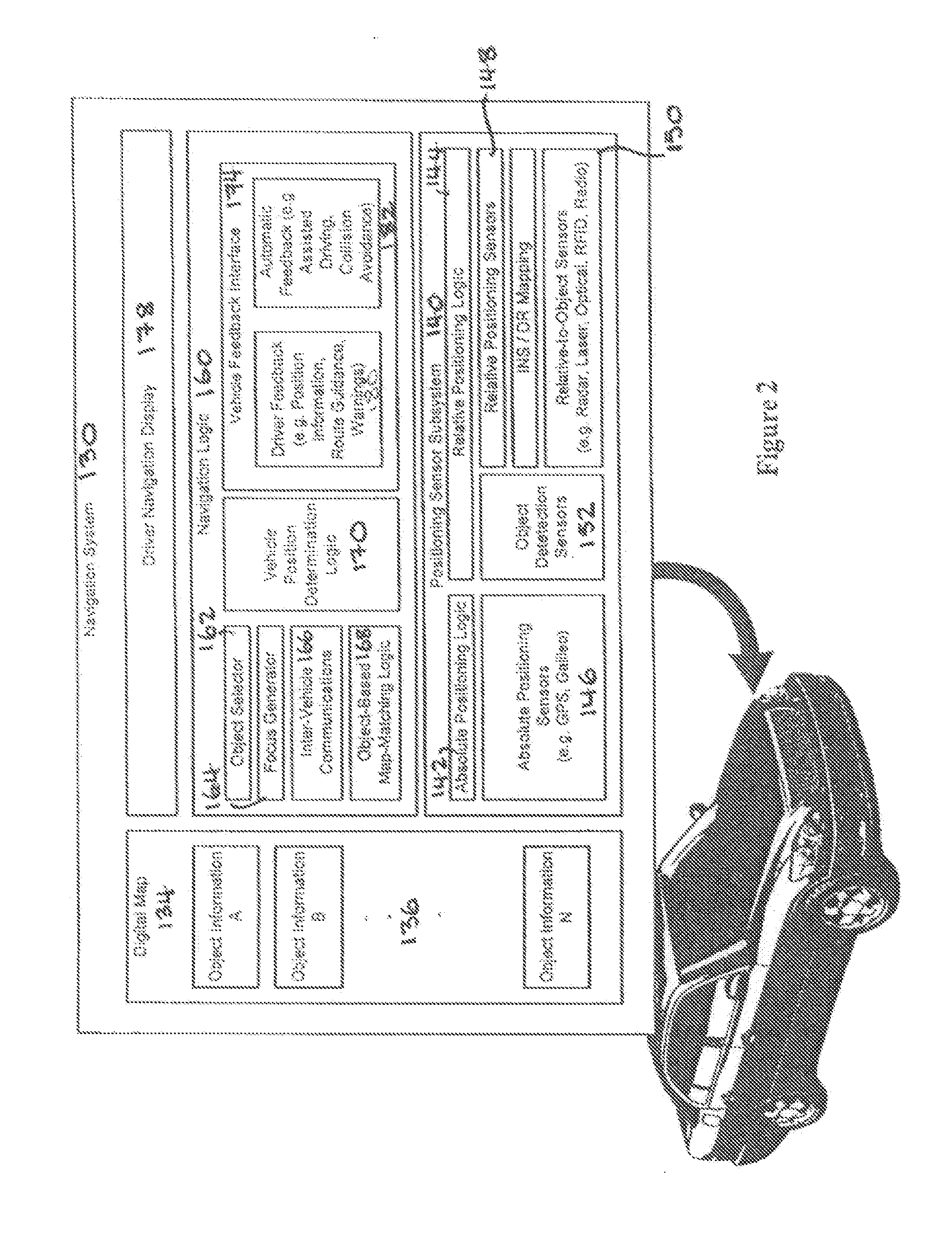System and method for vehicle navigation and piloting including absolute and relative coordinates
a technology of absolute and relative coordinates and vehicle navigation, applied in the field of digital maps, geographical positioning systems, vehicle navigation, can solve the problems of prone to accumulating small amounts of positional errors, errors still exist, and gps receivers experiencing intermittent or poor signal reception, etc., to achieve enhanced driving directions
- Summary
- Abstract
- Description
- Claims
- Application Information
AI Technical Summary
Benefits of technology
Problems solved by technology
Method used
Image
Examples
example 1
Vehicles within Direct Sensor Range of Each Other
[0052]In this example, the sensor within each vehicle can identify the other vehicle, and can estimate its distance and bearing. The navigation or collision avoidance system can judge if it is closing in such a way that there is a possibility of collision. In this example the digital map is not really needed although a digital map is useful to give some context to the situation (for example a bend in the road might help to explain why two vehicles are on an apparent collision path, but that it should be anticipated that the vehicles will soon turn away from one another). In this direct sensor case the vehicle sensors themselves use relative measurements to make these observations. This case also applies to the sensing of stationary objects. Again, no digital map is needed to sense a stationary object, but it is helpful to map match to the objects in a map to both identify the objects in relationship to the road geometry, and also to o...
example 2
Vehicles within Sensor Range of the Same Object
[0054]In this example, the sensors on board each vehicle may not have a sufficient range or sensitivity to detect the other vehicle directly. Perhaps there are obstructions such as a hill blocking direct sensor detection. However each sensor in a vehicle can detect a common object, such as the sign A in FIG. 1. As in the example described above, each vehicle can use “object-based map matching” to match to the sign A using the nominal accuracies of today's absolute position determinations both on board the vehicle and within the map. Unlike the typical “map matching” feature mentioned above as part of today's navigation systems, which matches the estimated position of the vehicle against road centerlines contained in the map; in accordance with an embodiment of the invention, object-based map matching matches the estimated position and characteristics of physical objects sensed by the vehicle against one or more physical objects and thei...
example 3
Vehicles Beyond the Sensor Range of the Same Object
[0057]In the most general case, the sensors on board the two vehicles may not be able to detect the other vehicle, or a common object, but may still be able to detect objects in their immediate vicinity. For example, there may be no convenient object such as the sign A in FIG. 1 that happens to be between the two vehicles and visible to both vehicles. Instead, vehicle 104 may only be able to detect signs B and C; and vehicle 106 may only be able to detect sign D. Even so, vehicle 104 can obtain a very accurate relative position and heading based on its relative sensor measurements from objects B and C. Similarly, vehicle 106 can obtain a very accurate relative position and heading from its measurements of object D and its heading estimate. Because B and C and D all have accurate relative positions to each other as stored in the map databases, these accurate relative positions can then be used by the vehicles for improve driving, rou...
PUM
 Login to View More
Login to View More Abstract
Description
Claims
Application Information
 Login to View More
Login to View More - R&D
- Intellectual Property
- Life Sciences
- Materials
- Tech Scout
- Unparalleled Data Quality
- Higher Quality Content
- 60% Fewer Hallucinations
Browse by: Latest US Patents, China's latest patents, Technical Efficacy Thesaurus, Application Domain, Technology Topic, Popular Technical Reports.
© 2025 PatSnap. All rights reserved.Legal|Privacy policy|Modern Slavery Act Transparency Statement|Sitemap|About US| Contact US: help@patsnap.com



